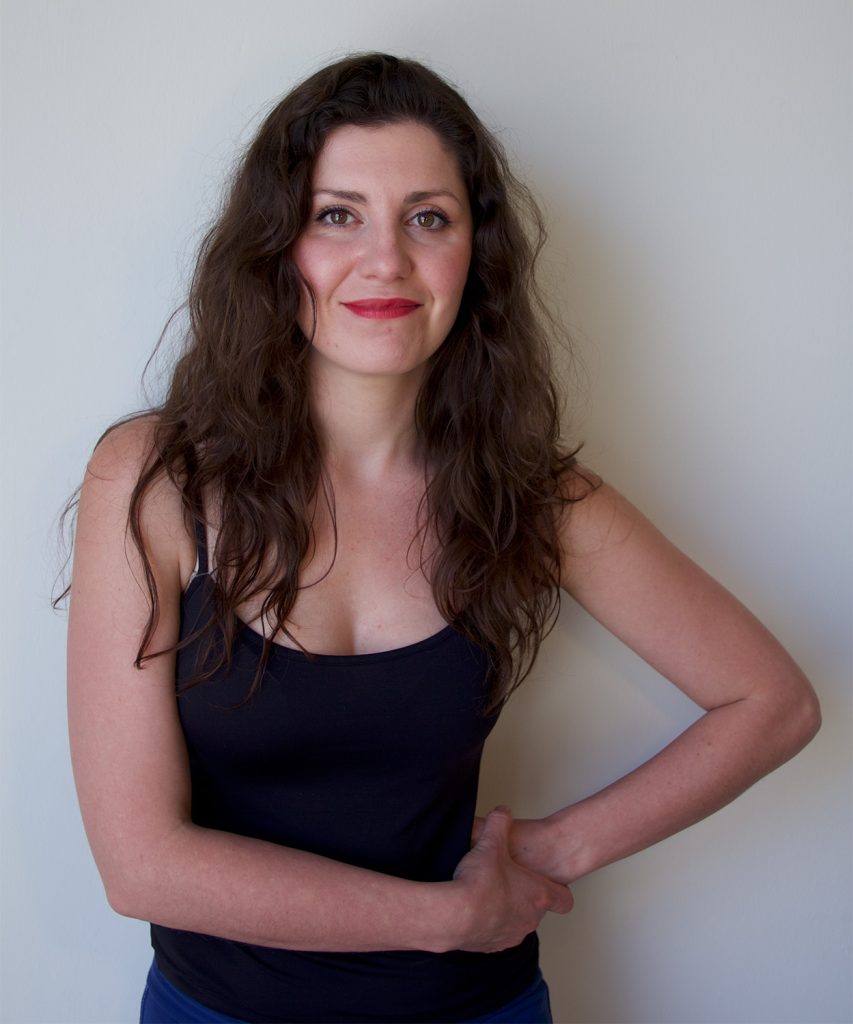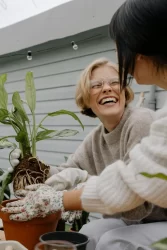Pilates, Anyone? A Pilates Master Teacher on How Pilates Works and How Transcendental Meditation Helps
Editor’s note: This interview is not an endorsement by TM for Women of the practice of Pilates, but rather an explanation by a Pilates teacher of the benefits as she sees them, and of how the TM technique can enhance those benefits for teachers and clients.
Joseph Pilates was born in Germany in 1883 to a father who was a gymnast and a mother who adhered to naturopathy. With these influences, Joseph grew up with the understanding that the body can heal itself and that exercise is a powerful force in achieving that goal. His studies of the human body started at an early age, including studying anatomy, Greek gymnasia, eastern movement systems, and yoga.
As an adult, Joseph started to rehabilitate veterans in Scotland. Years later, when he was living in NYC, his reputation grew exponentially for effective rehabilitation, rebuilding strength and vitality, and for preventing injury by focusing on spinal flexibility, movement, and mind-body integration with an emphasis on breathwork.
Boxers, athletes, gymnasts, and ballet and modern dancers including Jerome Robbins, George Balanchine, and Martha Graham went to Pilates for training. His wife Clara promoted the method being passed on to apprentices. There are now more than 2,000 Pilates instructors in the United States, but only a handful have trained directly with the Pilates Masters in Joseph Pilates direct lineage —Jade Davis is one of those few teachers.

Q: Jade, please tell us how you learned about Pilates and what attracted you to become a practitioner.
A: I came to Pilates through my dance training. I began taking dance classes at Theater school in Hertfordshire, England from three years old, including ballet, jazz, tap dance, modern and all sorts of theater dance. My first experience in Pilates training began at 9 years old, when I had a wonderful contemporary modern dance teacher who had us do Pilates body conditioning as a warm-up in every one of her classes. From this young age, I was lucky enough to be exposed to the genuine, original method in which she had been trained. That began my love for Pilates, and I kept up the exercises she showed me all the way through my dance training and career, right up until becoming a teacher.
By 19, I was a professional dancer trained at Theater and Performing Arts Colleges and had been performing in professional theater around England. However, due to a car accident and athletic training, I was in a lot of pain. I was going for physical therapy and osteopathic manipulation, but nothing would get rid of the pain from whiplash, broken ribs, a frozen shoulder, and a torn hamstring. I was developing scoliosis due to compensating for all these injured parts.
Even though I was in London where one has access to some of the best doctors and physical rehabilitation experts in the world—who train and rehabilitate ballet dancers and Olympic athletes—they couldn’t get me back to the range of movement, level of finesse, or perfection in balance that I required as a professional dancer. I didn’t want to just be able to put one foot in front of the other and walk. I wanted to be able to do refined beautiful movements with my arms, to dance, to jump, to pirouette and be gymnastic.
I came to Pilates because I was recommended by the British Performing Arts Medicine Trust to the head of the Pilates Foundation to do clinical or remedial Pilates with him in his London studio. When I started practicing Pilates there, I noticed I always felt a sense of freedom, physically and energetically. I felt I could move without restriction and was less bounded or limited by my body. Pilates also eliminated my chronic neck and whiplash pain that had kept me from wanting to wake up each morning.
Afterward, I shifted gears and went to the London Contemporary Dance School, the Royal Academy of Dramatic Arts, and the Guilford Conservatory of Music and Drama. At the same time, I was offered a scholarship to become a Pilates teacher.
I chose to become a Pilates teacher because of my empathy for people in similar situations. I basically wanted to give people hope and to take them on a journey that took them not just back to basic standard mobility, but to recapture all of their natural movement and articulation and proficiency in their sports and agilities.

Q: According to the Cleveland Clinic, “One of the reasons Pilates is such a good workout is that it specifically focuses on building core strength.” How does the practice of Pilates create core strength and affect long-standing habits that get muscles out of balance?
We have three different types of muscles. We have mobilizers, which move the bones which move the body, like biceps and triceps. These are large muscles that are attached to the bone and when they contract, they pull bones closer together, and when they expand or lengthen, they extend the bones away from each other. We have synergists, which rotate your bones (like the elbows, forearms and hips rotate). We have stabilizers that work 100% of the time holding the skeleton up but at a low level of effort.
So certain muscles are designed to do certain jobs. When we carry our bodies in a certain way or are sitting for long periods, there can be stress and tension. If we repeatedly hold tension in certain parts of our bodies in an unbalanced way, it pulls our skeleton out of alignment. In Pilates, we work on your core stabilizing muscles to increase your core strength. So basically, this helps to bring your muscle balance back into alignment—we’re building core strength and stability.
Q: I’ve heard that the benefits of Pilates are both therapeutic and preventive. The routines can help someone recover from an existing injury or deal with a chronic musculoskeletal concern. How does Pilates establish a healthy baseline which gives us more resilience?
A: The main thing in terms of resilience, I would say, is that it conditions your muscles, and really your whole body to be more vital. That’s why I call my Pilates studio “Vitalbody Pilates.” The idea is to get life energy circulating through your body and enliven the connection of mind-body-spirit. Integrating movement with awareness and feeling helps create better neurological pathways and your body’s articulation and control. Resilience can come from a number of things that result from developing greater capacity. As you condition your muscles, they become more vascularized—have better oxygen supply. There’s improved blood flow. Resilience happens because there’s less stress on the body. There’s less stress on the joints when you’re using your body and the muscles properly. So if you had to summarize, what is the baseline Pilates creates? The ability to take in oxygen and use it more productively while you’re working from the core of your body, working in a balanced way, a coherent way. Everything works in an integrated way, working as a whole, even when you’re doing isolated movements. In relation to that, I find that clients who learn the Transcendental Meditation technique become more resilient, focused, energetic, and flexible!
Q: You have a studio with participants ranging from three to their 80s in age and in many different shapes, sizes, and physical conditions. How do you customize their routines?
A: To answer briefly, I trained deeply in biomechanics postural assessment in which you’re trained to observe and see what we call muscle recruitment—when tendons and muscles fire, when the muscle activates. So, I watch in great detail to see exactly what muscles are working when people do an exercise. In my observation, I use the skills that I learned and assess people’s biomechanical patterns and habits and I look at the way they use their bodies. Then I design a program to better balance their muscles, basically looking to strengthen and stabilize hypermobile parts of the body, and then bring more movement through very stiff parts of the body to bring the body back into synch. I’ve noticed that Transcendental Meditation helps my mind be more adaptable—less rigid. TM makes my mind clearer and definitely expands my awareness and refines my sense of feeling and my senses.

Q: From what I’ve seen, you keep busy watching everyone in great detail and constantly helping adjust to the right position and movement. You also do that with as many as six people at a time! How do you manage to maintain such wide comprehension and sharp focus on detail at the same time?
A: Definitely Transcendental Meditation helps. If I’m tired, then it’s much harder to concentrate. But, more importantly, TM settles my mind effortlessly so that my awareness is subtly alert to everything around me; I have better spatial awareness and can pick up on every little thing—someone’s tense over here and then someone there is clenching their buttocks and someone else is clenching a muscle over there. It’s important to be aware of everything happening around me—I have to have a really wider frame of awareness and laser focus to observe and then correct. I can’t go to the studio being mentally tired because it’s essential that my field of vision is wider and that I don’t miss a thing.
I have to pick up on when someone is tensing or relaxing and what they’re feeling emotionally at the same time. People are sometimes suffering physically and a Pilates instructor is subjected to the emotions of that person, so it’s good that TM develops resilience keeping the instrument free of all the stress carried into the studio. Those who’ve learned TM have an effective way of reducing stress, but for most clients, I need to take care of myself and be fresh and on a good energy level and state of awareness to not develop compassion fatigue. I couldn’t pick up on what other people are feeling and have empathy if my senses and feeling were less refined. I really do have to be rested and restored. TM keeps me vital—if I just have a hot bath and go to bed it doesn’t refresh me in the same way. TM also just gives me much more mental clarity, so I don’t miss a trick, helping my clients progress faster.
Q: Anything else you’d like to say to women Pilates instructors about learning the TM technique?
A: The TM technique will refresh you mentally and emotionally after teaching. We give so much—the work can be absolutely exhausting emotionally, mentally, and physically; however, when you meditate in preparation for work in the morning, you feel stronger, more aware, and more resilient, so you can help your clients succeed and progress faster. The key to retaining clients is that they feel that they are getting a lot out of what they’re doing: progressing and feeling better. Also, nobody wants to be around a grouchy teacher and one of the benefits of doing TM is that it reduces stress significantly. So you feel more joyous and connected—you can be there for your clients despite what may be happening in your home or family. Pilates teachers sometimes just take a little nap in the afternoon between sessions so I suggest to them that “instead of sleeping on your Cadillac Pilates machine, you can meditate on it!”
Contact a certified TM teacher in your area.
About the Author
Janet Hoffman is the executive director of TM for Women Professionals, a division of TM for Women in the USA





